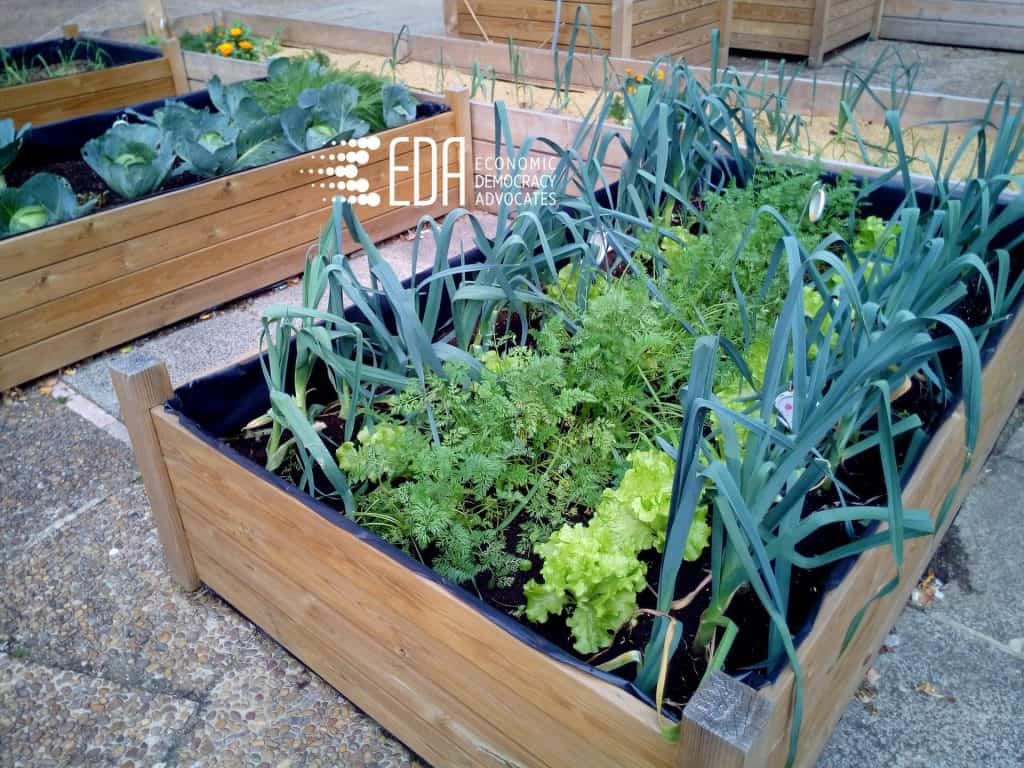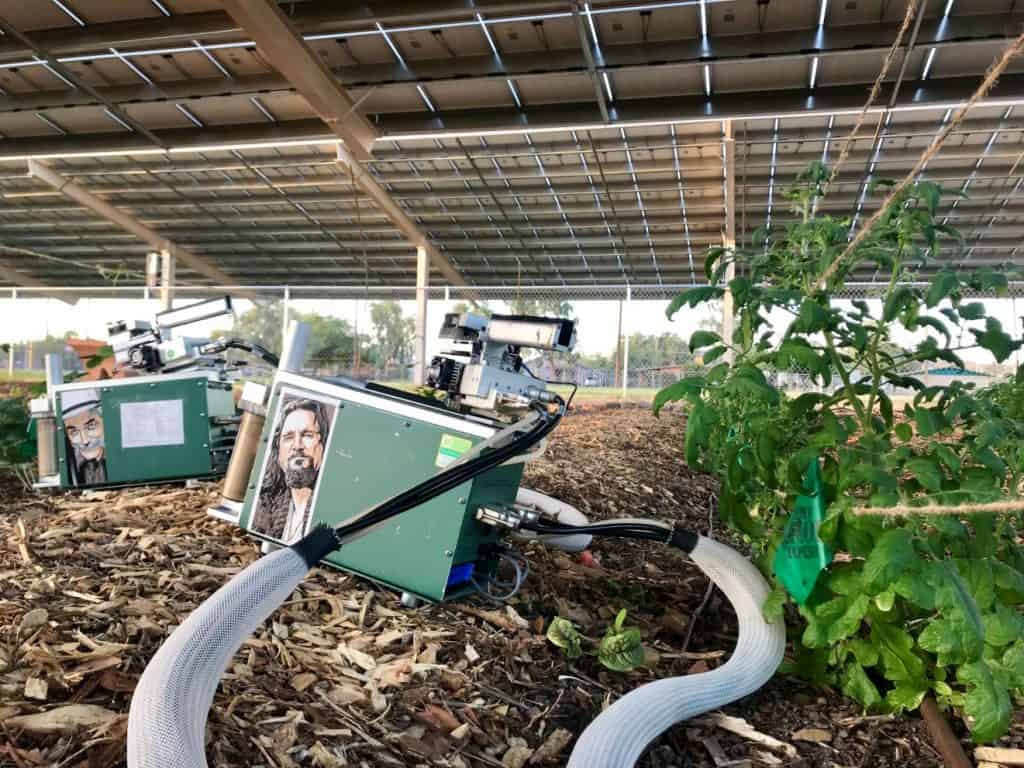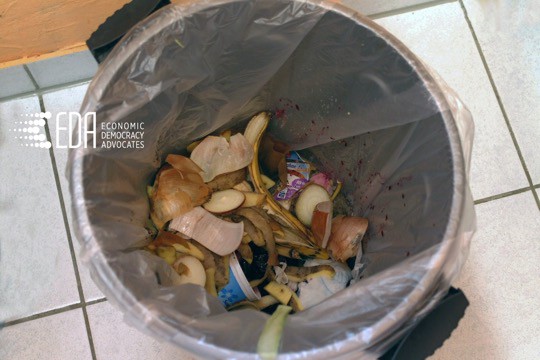We’ve included articles about the importance of growing food locally, and the various reasons why this is important. The article below focuses on what the author calls “leakage”, the reality in the majority of communities in North America where money spent in the community for basic requirements for existence like food, shelter, and water actually leaves the community to be consumed by non-community residents.
One of the basic arguments supporting the locavore movement focuses on the efficiency of capital investment. When we rely on food to be imported from other parts of the country (or other countries) we’re benefiting food producers elsewhere, and we’re benefitting the dozens of resources involved in the food distribution chain.
The article below is reminder that when we produce food within our own community we can change the balance of economic power bringing strength back to urban communities that are now food deserts. With the information about leakage that is provided here, we believe that you can make a difference in your own urban community and start building the infrastructure that will keep the capital at home.

What happens when you eat the wrong food over and over again? We call it “leakage.” Leakage is when capital exits the economy rather than remaining in it. Our current food system as designed (or left un-designed) is a constant source of leakage for our cities and a missed opportunity for urban planners.
Here in Tulsa, Oklahoma I’ve spent a good amount of time over the years attending public meetings and being involved in urban planning processes. I was involved in the PlanIt Tulsa process to update our City’s comprehensive plan. I was on the Citizens Advisory Team for our North Tulsa Sector Plan, and I’ve been involved with multiple other small area plans. But none of these plans addressed this leakage – an issue I believe could be handled by including food production in urban design.
Back in the 1830s, German economist Johann Heinrich von Thunen proposed an urban design that incorporated food production. Much like the historic cities we all love, the design Thunen proposed was based on the needs of humans, rather than automobiles.

A city food design proposed by Johann Heinrich von Thunen in the 1830s
In his treatise, “The Isolated State,” Thunen proposed dividing cities into rings of agricultural production. The most intensive farming was positioned closest to the inner city, followed by agro-forestry, grain farming, animal raising, and finally wild nature.
About 11 years ago, I moved my family to one of the most socioeconomically disadvantaged zip codes in Oklahoma. It didn’t take long to realize the effects of living in a food desert, where healthy food cannot be purchased within a mile of our home. This caused me to begin reading about urban farming and the idea of permanent agriculture systems, inspired in part by Thunen’s ideas.
In June of this year, I felt comfortable enough to challenge myself to eat only from what I’ve grown in my backyard.
That experience, which was documented by Edible Tulsa magazine, has inspired me to challenge others to explore the feasibility of urban farming and consider how integrating organic food production in urban environments would build community resilience and solve a number of common economic, health and ecological problems.

An average American household spends $7,203 on food each year. Of that amount, $3,905 covers the actual cost of the food before markup by food vendors. (Source: Bureau of Labor Statistics)
THE ECONOMIC BENEFITS
What if city designs included space for urban farming to provide a percentage of the calories required by their inhabitants? What if the community saw urban farming as an opportunity for economic growth and employment? What if the local government spent the same amount of money on the education, distribution, and land leasing to create food related jobs as it did on to attracting big businesses?
Let’s consider how much money could be kept in the local economy by creating our own urban food plan, giving local farmers the opportunity to supply the food sold at local grocery stores and restaurants.
If you keep up with the average, your household will spend $7,203 on food this year, according to the Bureau of Labor Statistics. About $3,965 of that amount is the actual cost of the food, before markup, or the portion that could be paid to farmers if they were supplying the food.
Here in Tulsa, we’re considering how to densify the square mile where I live just north of downtown for a residential population of 20,000. By supplying the restaurants and grocery stores where these residents buy their food, farmers could earn up to $33 million a year. This could support as many as 330 farmers earning $100,000 a year by supplying food vendors.
Expanding past our square mile to the city of Tulsa as a whole, there is half a billion dollars in food supplied each year. This amounts to a lot of leakage every year. Not only are we sending a majority of that half billion out of state every year, but we’re sending an ever-increasing percentage of it outside of our country.
According to data from the Food and Agriculture Organization of the United Nations, Americans imported from other countries as much as 25 percent of their food consumed in 2013. That was a 6 percent increase from 2012, which saw a 6 percent increase from 2011. Why are we alright with sending that amount of capital out of our city’s economy year after year?
Imagine if Tulsa could provide a large percentage of the half a billion dollars each year to farmers, who are part of our local economy and could keep that money in our economy.
PERMANENT AGRICULTURE
In my opinion, food-bearing trees and perennials (plants that come back from their roots each year) are a big solution. If you take the L.L. Tisdale Parkway north from downtown Tulsa and look to your right, you’ll see about 500 trees and shrubs cascading down a hill separating the highway from my neighborhood.

Creating the bioswales for the Tisdale Food Forest

Trees after three years along the bioswale
This spring will be year four for our trees in the Tisdale Food Forest. We are planning for a large harvest this coming year. Peach, plum, apple, cherry, pear, jujube, fig, pecan, walnut, hazelnut, chestnut, walnut, mulberry, service berry, blackberry and grapes are some of the trees and shrubs that have grown well here in Tulsa, Oklahoma.

Our property in 2015 after implementing permanent agriculture techniques
Follow the rows of fruit and nut trees up the slope from the highway, and you’ll find my house near the south entrance to the historic Brady Heights neighborhood. My family has 100 trees on the urban farm we’ve created on our property, which includes a house and a commercial building next door.
All of our trees are no older than five years old, and yet it is now late October and my deep freezer is still full of peaches from the spring. When our trees produce too much fruit for us to process, we sell them to local restaurants.
In an empty lot a few doors down from the commercial building, I started a tree nursery, planting 500 baby fruit and nut trees. We are also planting an additional 500 fruit and nut trees at our neighborhood elementary school over the next two years
URBAN FARMING
Compared to planting trees and perennials, urban vegetable farming requires much more intensive management but can provide huge economic benefits. For example, Curtis Stone, in his book The Urban Farmer, details how he leases neighbors’ backyards and earns $75,000 from one-third of an acre by using bio-intensive farming methods and quick crop rotation.
We created our first market farm at the Tisdale Food Forest by tilling up three 250-foot beds this year and giving young farmers a chance to show they can handle the chore. In my backyard, my wife and I started planting urban farm beds with the goal of providing the majority of our food. Each year since 2013, we’ve been able to supply a larger percentage of our diet from food grown in our backyard.
HABIT CHANGES
In order to truly stop the leakage, there needs to be a big shift in personal and business habits. According to Toby Hemenway in The Permaculture City: Regenerative Design for Urban, Suburban, and Town Resilience, the most resilient way to eat is to think of your “foodshed” – the area within which your food is produced – in zones.
The zones are ordered by proximity to your plate:
- Zone 1: Your garden
- Zone 2: Your neighbors’ and community gardens
- Zone 3: Farmer’s markets and community-supported agriculture
- Zone 4: Independent grocery stores with a regional focus
- Zone 5: Chain supermarkets
The goal is to meet your food needs in the innermost zones first, whenever you can. “By doing this we shrink our food footprint and gain control over and information about the sources of our food,” Hemenway writes.

An apple tree in the Tisdale Food Forest
Restaurants and grocery stores could support this habit change by looking to local farmers to supply a greater percentage of their food. In Tulsa, the website Agruity.com is already helping businesses make this shift by connecting farmers and businesses as well as farmers directly to consumers. Through the website, businesses and consumers can order food from the farmers, who make the deliveries on their own schedules.
The businesses benefit by advertising as Agruity members, as well as by being featured by the website on a map showing which businesses have purchased the most local food.
A VISION
What would a community look like without food leakage? Let’s take a quick walk and allow ourselves to dream a bit. Dreaming helps us create a language of what a city can be and something we can begin working towards.
In the square mile where I live, I envision walking down the sidewalk and passing by flowering fruit and nut trees as I take my kids to school.
At the center of our community, families are participating in activities on the 20-acre grounds of our new public Montessori school, which serves as a community hub. These grounds look like a park but are actually filled with food bearing and native plants, restoring and sustaining our natural habitat.
Walking back from the park, I pass more homes and businesses, behind which are courtyards filled with intensive urban farming. Alongside a working farmer, children are helping pick the food – reversing the nature deficit disorder one tomato at a time.
I stop and talk with the farmer about today’s harvest. He packs up his tools, and we head to a local restaurant, where we eat freshly harvested produce that is bursting with flavor and full of nutrients. And the money we spend begins another cycle through our community.
(All images courtesy of the author unless otherwise noted. Top photo source – Patricia Maine Degrave; 2nd photo source: Mark Hogan)
Article written by Nathan Pickard
Article published by Resiliance.org


